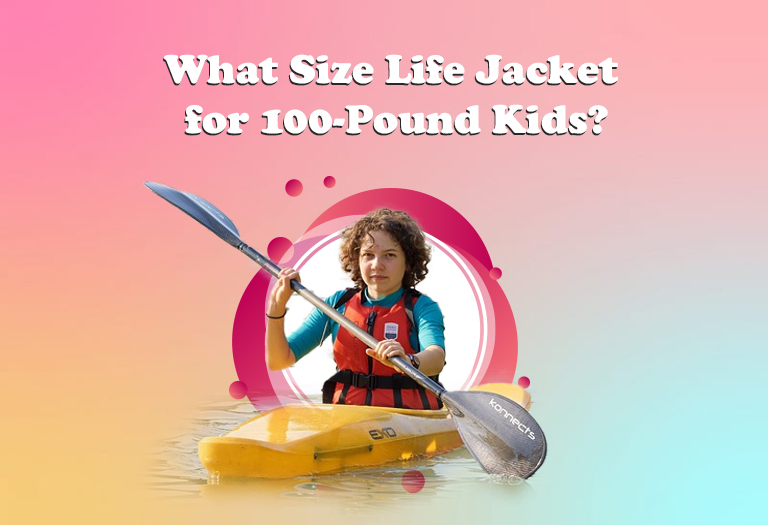A life jacket of 45N can fit a child of 100-pound weight. Generally, a child gains weight of 100 pounds (around 45 kilograms) at the age of 10 to 12, chest measurement of 45 centimeters. The child might reach the weight early if s/he has a fast growth rate.
Introductions
Planning to take your infants in the water? That’s a good decision. Children should be allowed to be connected with nature, enjoy the freedom but of course with safety. When I am talking about safety, I mean, child’s pfd ( personal flotation devices ) available for toddlers in the market.
One of the essential child’s pfd is toddlers life jackets. This item is found based on their age, weight and in different types, designs, variations, purposes etc.
On that note, in this article, I will be specifically discussing what size life jacket for 100-pound kid is right. You will also find in-detail information on jacket sizing for kids, features to look for a jacket for them and tips to ensure their aquatic safety.
So, without further ado, let’s begin.
Table of Contents
Types of Life Jackets for Growing Kids
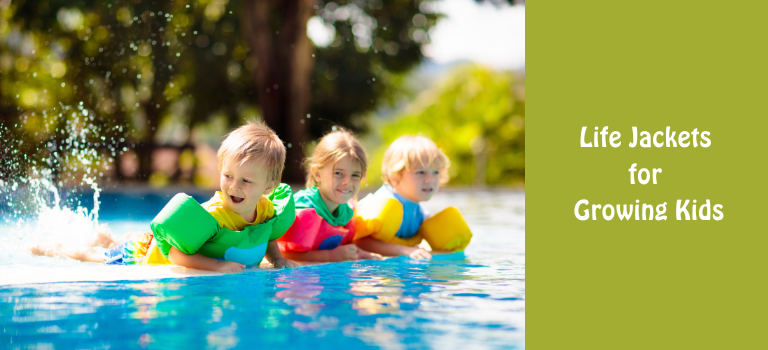
There are various types of life jackets available in the market. However, the most convenient and child-approved jackets are the following ones.
Type I
This type is used for offshore areas, rough seas, and remote water. It is used for turning a person or child’s chin up, who is unconscious and his face is down. However, this type of jacket is bulky.
Type II
Type II is used as protection for infants in the water. It helps children to turn in the position to breathe if they turn upside down in the water. Generally, type II is used in near-shore areas, where there is a quick rescue chance.
Type III
These jackets are lightweight and don’t cause any discomfort to children as they can move as freely as they like. It has been designed to keep the child’s chin in an upward position. So, it works in turning an unconscious person (if s/he is faced down). Experts recommend using this life vests for sports activities in water and areas where there is a fast rescue option.
Understanding Life Jacket Size Range

One talked term you will hear while buying these jackets is ‘Buoyancy’. What is this? Buoyancy means the force that helps a young one stay floating in the water. This is measured with the letter ‘N’ which stands for ‘Newton’. For example, 10N is comparable to 1 KG.
Here is a chart on children’s life jacket size.
| Age | Weight Range | Minimum Buoyancy |
| 1 to 2 | 20 to 30 pounds | 20N |
| 3 to 6 | 30 to 50 pounds | 22N |
| 7 to 9 | 50 to 85 pounds | 35N |
| 10 to 12 | 85 to 110 pounds | 45N |
Determining the Correct Size for a 100-Pound Kid
If you are going to find the best life jacket size range for a 100-pound kid, here is a guide on how you can determine that size.
Step 1: Consider children’s weight. Life jackets generally have labels, showing the weight ranges. So, you will have an idea if this child’s pfd or personal flotation devices is the good fit or not.
Step 2: Measure their chest size. Take a measuring tape, check the chest circumference (exclude the arms), and note it down.
Step 3: Check the sizing chart. Ask the store owner for one if you can’t find it. A size range chart will help you find the appropriate size as well.
Step 4: Do a life test of the life vests. Ask your child to wear it so that you can understand if it is the right fit and buoyancy. Also, the life vest should neither be too loose nor too tight.
How to test the life jacket?
- Let your child put it on.
- Ask him/her to move their hand, leg, and torso like they do in the water.
- If possible, let them dive into the water as well. Check if their chin is kept upward.
Step 5: Do a thorough check on straps, if they are flexible enough for customization, and if those secure the torso well and don’t cause any physical irritation. Also if the child can breathe well while the life jacket is on. Make sure to check if there are any suggestions by the manufacturers for ensuring young children’s safety.
Features to Look for in a Life Jacket for a 100-Pound Kid

Let’s have a look at what are the features we should take note of while searching for kids life jackets for a 100-pound kid.
Child’s activities
Will your child learn to swim or engage in any games? Based on their activities, you need to find the best life jacket. Let’s say if you are buying a general one, but they are hyper-active in water, the life vests won’t provide the support.
Type of life jacket
Among the different types of jackets, check which one fits right for your purpose and your child’s chest, as we are talking about children of 100 pounds. Based on type, they will not only keep the toddler floated but also help them move.
Head support for little children
Life jackets available for smaller children should have child’s head support. As children get most panicked in any unexpected situations, you need to make sure that you are buying a well-featured jacket having this type of support.
Has straps between the legs
This type of supporting strap helps the life jacket stick with the child’s body so, that whenever the young children are in the water, this doesn’t come off.
Appropriate size
Toddlers up to a certain weight don’t require chest measurement and weight is all to calculate while finding the child’s life jacket perfectly. Do not buy large-sized ones hoping the kids will grow and fit, this is risky and won’t serve the purpose you are buying it for.
Rightly Fitting
Not too tight, or loose, neither big or small. The right jacket will feel snug fit yet comfortable. Check the buoyancy is right for your kids based on weight. Test the life vest by letting the child wear it and if possible inside the water. Make sure the life jacket is flexible yet offers mobility for their limb movements. While they wear check the adjustable straps as well.
Style & color
Life jackets are generally fitting, so kids might throw a fit, and refuse to wear them. You need to make the item familiar to them. Bring them to shopping so that they can choose their own one, have them wear it and start slowly. As long as the item is their favorite color or style, they will find it cool to wear. However, aiming for bright color so that it is visible from a distance is a wise move.
Creative Design
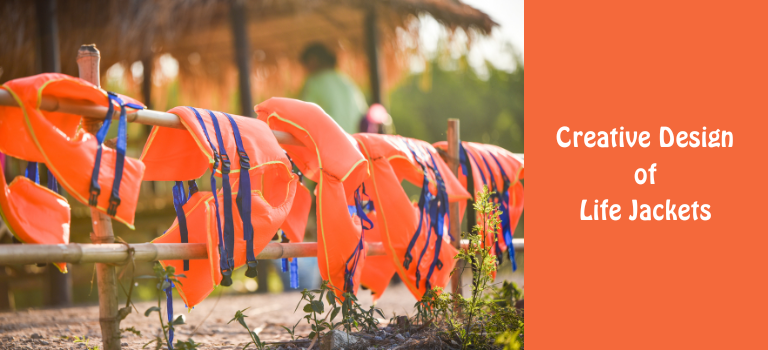
Modern jackets have different unique designs to ensure maximum safety. If you can find such jackets around you, you may consider buying one like these. Here are 3 different styles of jackets people talk about.
- Inherently buoyant: These are long-lasting and made of neoprene or foam that keeps the wearer’s body floated.
- Inflatable: It either automatically deploys or is manually inflated in water, mostly used for children over the age of 16.
- Hybrid: Combination of inflatable chamber and buoyant material and child sizes are findable. These are less bulky.
Technological improvement
Some children’s life jackets have brought revolutionary changes. They come with the touch of modernization such as, including GPS trackers, built-in speakers, designed with auto-inflation systems, etc. Having such jackets can be one of your priorities.
The comfort of the life-jacket
Do several cross-checking and testing of fitting the life jackets and breathing of your child. These many tests to ensure the life vest is well-comfortable for the child while they wear it. As long as this isn’t causing any issues or discomfort in their body, you can manage to train them to wear it.
Some more features to look at
You can also check the following
- Coast guard approved indication label.
- Extra large collar for child’s head support
- Reflective materials
- Grabbing strap near the collar etc.
Check reviews
It is safe to buy life jackets directly from the store. If you are to buy from an online website, aim for the ones from renowned brands and worn by models. Check the brand’s or seller’s reviews. What other buyers are saying about it. You will have a good idea on the performance and support the item offers and if it is long-lasting for your child.
Life Jacket Sizes for Kids of Different Ages
Infants and babies’ life jacket sizing is decided mostly on their weight. Here is the size chart for infants and babies’ life jackets based on weight.
| Weight | Life jacket category |
| Babies under the weight of 30 pounds | Infants/ baby life jackets |
| Kids between 31 to 50 pounds | Toddler life jackets |
| Children between 51 to 90 pounds | Youth life jackets |
As kids don’t develop physical attributes much until a certain age, their chest measurement like older kids isn’t required. Therefore, their jackets include the following features:
- Padded head support for keeping the child’s head floated in the water.
- Grabbing handles for pulling them from water.
- Crotch strap to help the life jacket from riding up.
Life Jacket vs Swim Vest: Are These the Same?
If we are talking about water-safety for kids, both life jacket and swim vest as personal flotation device comes into play. These buoyancy aids serve different purposes but the common goal is to prioritize child’s safety and ensure maximum support in their water-activities.
The vest and jacket have different features, purpose and functionality. So, it is important matter for parents to understand when and where they need to use these items for their children.
What is a life jacket?
Life vests or life jackets are like a safety device attached to a child’s body whenever they are going into deep water. It offers maximum support and buoyancy. The item is engineered to keep the wearer body afloat. So if any uncertain situation occurs, a life jacket will help save the wearer, even if s/he is unconscious, or the wearer is in a face down position in the water.
Usage: Made of special components, these jackets are easily findable in the market and available for all weight and body shapes of children. As it contains various straps, so it stays in position in the body and offers a snug fit.
This item is primarily used for activities like boating, rafting, etc. When your child is going where the water is somewhat deep, such as a swimming pool or river, a life jacket is the perfect fit.
What is swim vest?
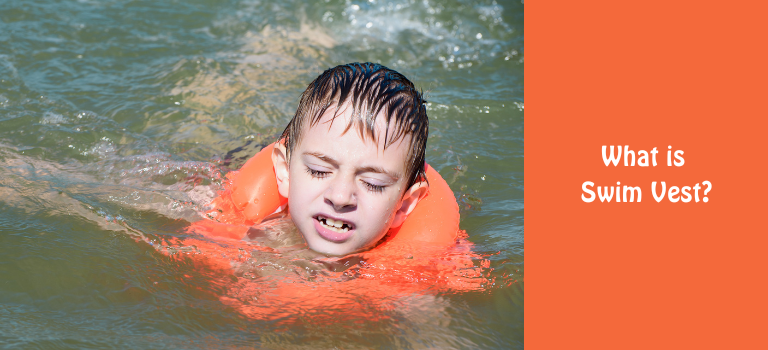
A swim vest is somewhat less intense than a life jacket. It is used for teaching children swimming and recreational purposes. It generally keeps the babies in a floating position, so that they can learn to swim.
Usage: It is made of light-weight materials such as neoprene, foam etc. Thus it supports babies’ body stay in horizontal position And what’s important is that it doesn’t restrict their movements.
Let’s check their differences.
- Buoyancy & floatation
Both vests and jackets offer buoyancy, but their level of floatation differs. Whereas the jacket provides maximum buoyancy, the materials inside are thicker.
- Aid to water activities
Vests can support mild activities like swimming practice, whereas jackets are for real actions, such as boat traveling, water games etc.
- Weight of personal flotation device
Swimming vests are comparatively less bulky and comfortable and snug to wear for children than life jackets.
Tips for Ensuring Children’s Safety on the Water
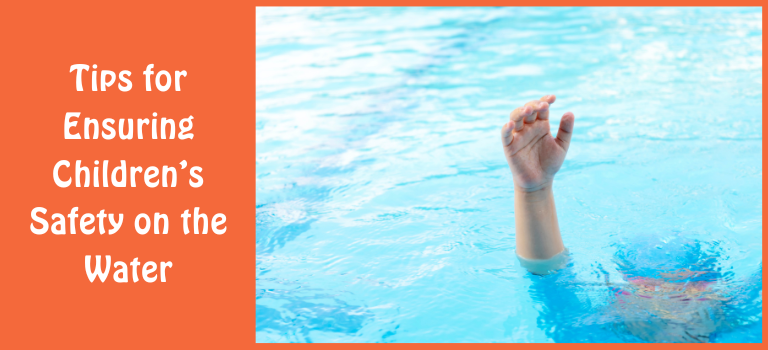
While you want your child to have their water time, you also want them not to face any danger, meaning, your child’s safety is the priority. Follow these tips to ensure optimal safe situations while they are in the water.
Provide lessons on swimming
Children are fast learners. You can train your kids to swim at an early age. This will minimize the risk of children getting drowned as they will comfortably dive deeper. Here is what you can do to provide swimming lessons.
- Make them comfortable by staying in the water.
- Teach them to hold their breath under the water.
- Tell them to practice staying floated on the surface of the water. For that use supports like air toys.
- Teach them to float front and back, in a relaxing way.
- When they have reached the goal of floating, move their arms and feet.
Demonstrate with live example
Toddlers follow their parents. So, the first and foremost rule is to prepare yourself. Show your child how to do it and tell them why this preparation is needed. Also, as parents, you need to engage more with your children about their water safety. Therefore
- Talk about water safety and precautions
- Teach them about different safety props and show how to use them. Gradually let them wear by themselves.
- Be patient with them while teaching about the life jacket.
- Teach them signature moves, or some emergency technique whenever they need help.
- Let them get used to deep water gradually.
Keep a vigilant eye
Whenever your child is near water, stay alert, and supervise their movements. Children’s accidents can be reduced to a certain degree if parents are careful. Stay close proximity whenever the area your child is in has ponds or water-tank etc. Avoid any addictive drinks or drugs when you are with your child. Keep the distraction at bay whenever you are with your child enjoying the freedom and water adventure. Also, you can learn CPR and emergency first aid by yourself.
Fencing around the pool
If your house has a pool, pond, or you are living near the sea area, and your kids don’t know how to swim or are too tiny to take care of themselves, separate the watery area. So, it is difficult for the children to cross. Build a fence around the pool or pond. If possible make a door for it so that you can know whenever anyone is trying to open that door. If your home is near the sea, build a habit for your kids not to go alone.
Find the right-fitting floatation props
Find the right swimming and flotation props, life jackets, swimming vests and other playing items for your kids. Whenever they are going in the water, make sure they are prepared for it. Make it a habit for them.
Teach the safety rules
Have some safety talks with your kids from time to time. Knowing safety rules will help them not to freak out in case of any danger and they will calmly decide on that situation. Here are some rules you can teach your child.
- Do not go alone near the pond,
- Stay seated whenever you are in a boat or riding any water toys,
- Do not move much while riding any water boats.
- Always wear life vests in deep water and a swim vest for learning to swim.
- Stay floated on the backside and keep your chest upward.
- Whenever you are going to swim, use sunscreen, sunglasses, and appropriate clothing for it.
Have emergency support prepared
Always save the contact details of some emergencies, such as medical, police, or rescue teams so that you can call for them in case any situation arises. Also, you can assign a ‘water watcher’ for your kids who will monitor children whenever they are on the pond. Keep rescue items and first aid boxes near you.
If your kids have just started walking, you may consider installing safety devices such as pool alarms, CCTV or installing door knobs on washrooms that have bathtubs that don’t open easily.
Plan for place beforehand
In case any accidents occur, what should be the steps and where to go first; it is better to have this plan beforehand. So that each member of the family understands his or her role and everyone can perform their task without any delay.
Frequently Asked Questions (FAQs)
Question: What size life jacket does my child need?
Answer: To determine what size of life jacket your child needs, consider his/her age and weight. Getting the accurate measurements in hand will help you avoid any confusion or getting the wrong-sized jacket.
Question: How do you measure a child for a life jacket?
Answer: Let your child wear the life vest. Now, pull it up to the shoulder. If the life vest reach to his/her ear, it’s loose and big. The life vest will comfortably attach to the body of the baby and provide a snug fit.
Question: Does youth life jackets fit all sizes?
Answer: Life jacket comes in different sizes for every size and age of children. But, my sincere warning is not to buy a larger size one. Rather buy this item fitting as per the body shapes and size of your child.
Question: How to know if the life jacket is big?
Answer: The life vest will slip or fall from the shoulder, with loose armpits, and overlapping closure. While your child is wearing it, if you pull it, the collar will reach their ears.
Question: How to know if the life jacket is small?
Answer: The zipper can’t be closed, the strapping needs a full-length opening and the chest part will stay open or too tight to zip up.
Can my child wear a swim vest instead of a life jacket?
No, you should not. Both the swim vest and the life jacket serve different purposes. The former one offers support for the babies to float, whereas the latter one offers some intense level of protection.
Conclusion
When it’s about a child’s safety in the water, parent’s priority is to find the best-suited personal flotation device for them. Finding the right fitting jacket for 100-pound kids helps ensure they are enjoying their water fun to the fullest without any danger. Hopefully, this article has guided you through the right information. Keep an eye on our blog to find more helpful & relevant articles.

